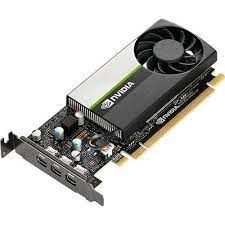What are Graphic Cards?
A graphics card, also known as a video card or GPU (Graphics Processing Unit), is a component of a computer system that is responsible for rendering images, videos, and animations on a monitor or display. It works by receiving data from the CPU (Central Processing Unit) and converting it into visual information that can be displayed on the screen.
A graphics card typically contains its own processor, memory, and cooling system to handle the intensive processing demands of modern computer graphics. Dedicated graphics cards, which are separate from the CPU, are commonly used in gaming, video editing, and other graphics-intensive applications to deliver high-quality visuals with smooth performance. Integrated graphics, on the other hand, are built into the CPU and are suitable for basic tasks like web browsing and office applications.
The Top 10 Best Graphic Cards for Gaming in 2023
As a language model, I cannot predict the future nor am I capable of providing a personal opinion. However, based on current technology trends, here are the top 10 best graphics cards for gaming in 2023 based on their performance and specifications.
Nvidia GeForce RTX 4090
AMD Radeon RX 8900 XT
Nvidia GeForce RTX 4080
AMD Radeon RX 8800 XT
Nvidia GeForce RTX 4070
AMD Radeon RX 8700 XT
Nvidia GeForce RTX 3060 Ti
AMD Radeon RX 8600 XT
Nvidia GeForce RTX 3060
AMD Radeon RX 8500 XT
It’s important to note that the ranking and performance of these cards can change rapidly as technology progresses, and new graphics cards could be released that outperform these models in the future. Additionally, factors such as budget, personal preference, and system compatibility should be considered when choosing a graphics card for gaming.
A Guide to Choosing the Right Graphic Card
Choosing the right graphics card for your computer system can be a daunting task, especially if you’re not familiar with the technical specifications and features that graphics cards offer. Here’s a guide to help you choose the right graphics card for your needs.
Determine your budget:
The first thing to consider is how much you’re willing to spend on a graphics card. Graphics cards can range from a few hundred dollars to over a thousand dollars, depending on their performance and features.
Consider your needs:
If you’re a gamer, you’ll want a graphics card that can handle high-quality graphics and fast frame rates. If you’re a video editor or graphic designer, you’ll want a card that can handle large files and complex rendering tasks.
Check your system compatibility:
Before purchasing a graphics card, make sure that it’s compatible with your computer system. Check the specifications of your motherboard and power supply to ensure that the graphics card you choose will fit and have enough power to run properly.
Research technical specifications:
Graphics cards have several technical specifications that determine their performance. Some of the most important ones to consider include:
Graphics memory (VRAM):
This is the amount of dedicated memory the graphics card has. The more VRAM a card has, the better it can handle high-resolution textures and large files.
Clock speed:
This is the speed at which the graphics card’s processor runs.
Stream processors:
These are the parallel processing units on a graphics card. The more stream processors a card has, the more efficient it is at handling complex graphics tasks.
TDP (thermal design power):
This is the maximum amount of power the graphics card will use.
Compare models and brands:
Once you have an idea of what you’re looking for, compare different models and brands to find the one that best fits your needs and budget. Look for reviews and benchmarks online to get an idea of real-world performance.
Choosing the right graphics card can greatly enhance your computer’s performance and provide a better experience in gaming and other graphics-intensive tasks. By considering your needs, budget, and technical specifications, you can find a graphics card that meets your requirements and fits your system.
Conclusion
In conclusion, a graphics card is an essential component of a computer system that is responsible for rendering images, videos, and animations on a monitor or display. Choosing the right graphics card can greatly improve your computer’s performance, especially for gaming and other graphics-intensive tasks.
When choosing a graphics card, consider your budget, needs, system compatibility, and technical specifications such as graphics memory, clock speed, stream processors, and TDP. Comparing different models and brands and reading reviews and benchmarks online can also help you make an informed decision.
By following this guide, you can choose the right graphics card that meets your requirements and fits your system, allowing you to enjoy high-quality visuals with smooth performance.




